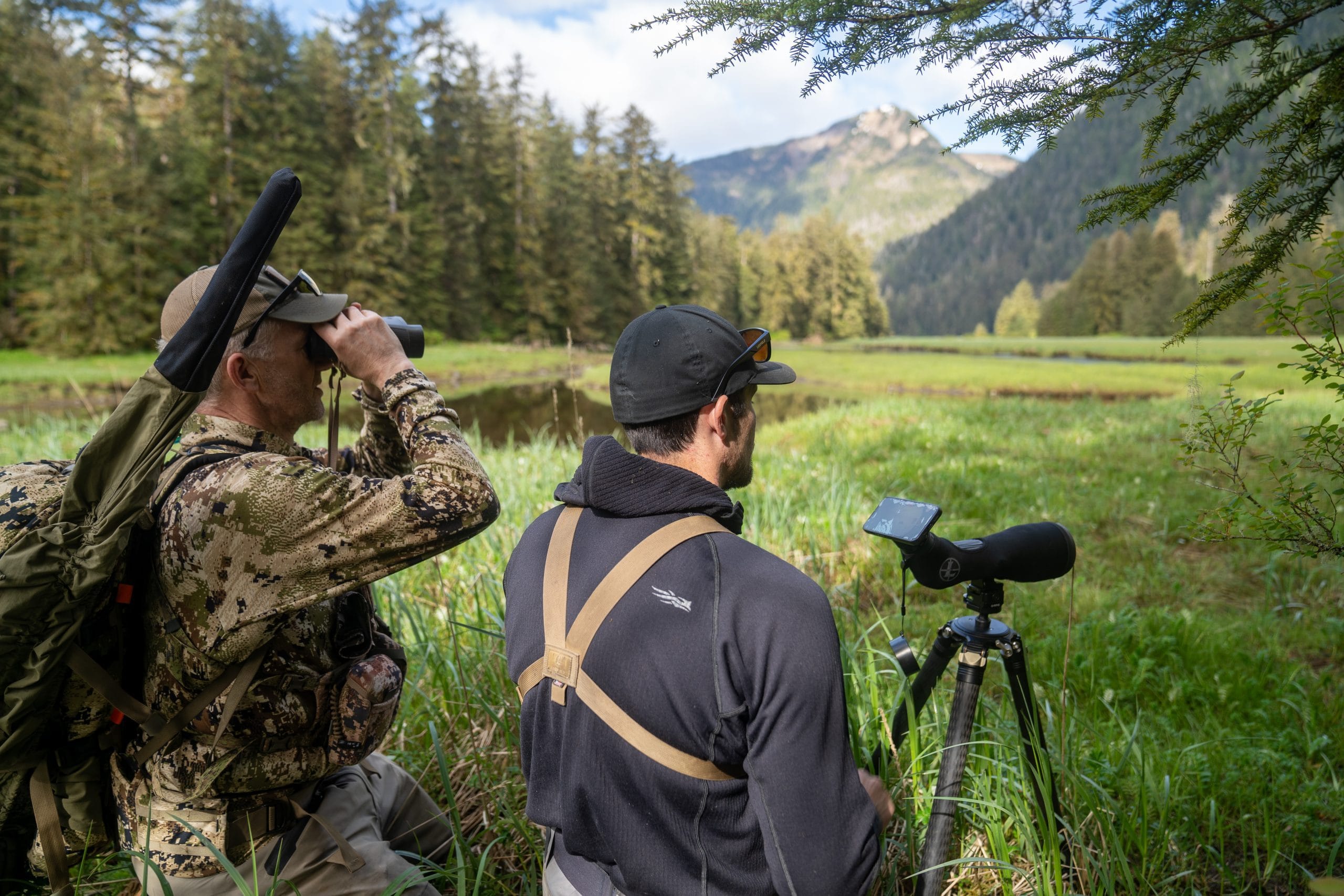Alaska’s rugged wilderness offers some of the most thrilling DIY spring bear hunt experiences, but it also demands careful preparation. A DIY spring bear hunt in Southeast Alaska, in particular, requires specialized gear to handle the unpredictable weather, wet conditions, and remote terrain. Based on firsthand experience from a recent hunt, here’s a breakdown of the essential gear you’ll need to stay dry, mobile, and successful in the Alaskan backcountry.
Pack Rafts: Your Ticket to Remote Locations when Alaskan Spring Bear Hunting
For us, this is one of the most critical pieces of gear we pack on our Alaskan adventures. Shallow bays and shifting tides create many challenges for larger boats so to combat those challenges, we’ve started taking pack rafts with us. These lightweight, inflatable rafts allow our team to access areas that were otherwise unreachable. Whether crossing rivers, navigating coastal waters, or moving between islands, pack rafts provided the mobility needed to get to prime hunting spots. If you’re planning a DIY hunt in Alaska, a pack raft is a game-changer for accessing remote areas where others can’t go. There are many many brands, shapes and sizes out there but we’re fond of the Alpacka Rafts.
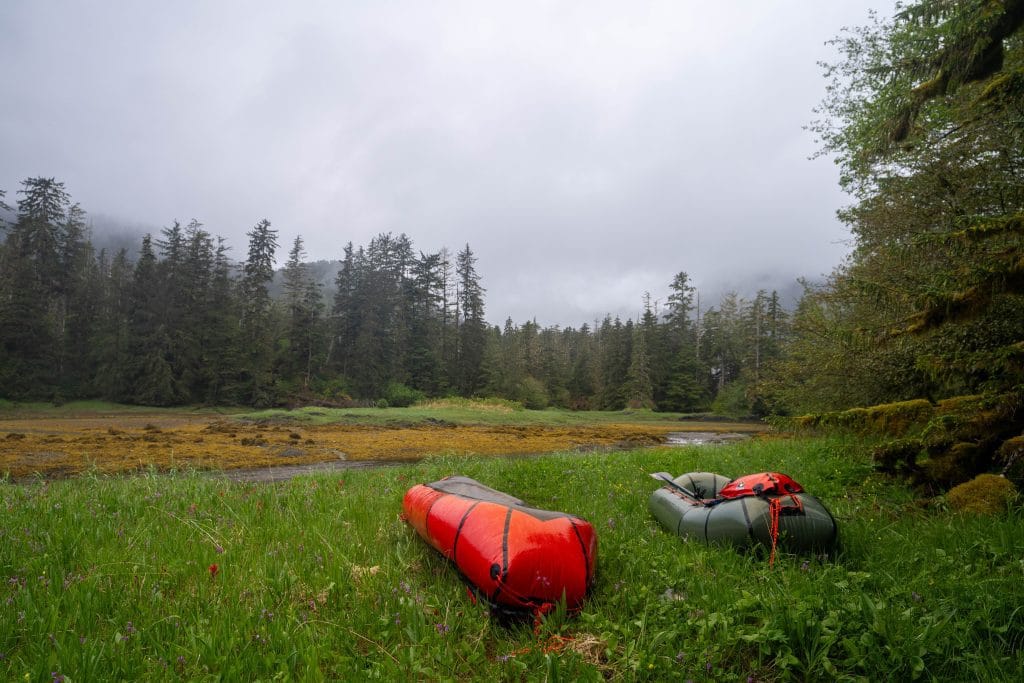
Staying Dry in a Wet Environment
Alaska’s spring weather is notoriously wet, and staying dry is essential for comfort and safety.
Rain Gear
- Sitka Gradient Pants: These pants are designed to be worn under waders or wading pants. They feature a foot strap to keep them in place and dry quickly, making them ideal for staying warm in your waders.
- Wading Pants or Waders: Depending on your preference, choose between wading pants or full waders. Wading pants are sufficient for most situations, as you’re unlikely to be walking in chest deep water. We use a variety of different waders including the Simms G3 Wading Pants or a more packable wader like the Wiggy’s.
- Durable Rain Jacket: A high-quality rain jacket is a must! You’ll wear it constantly, whether it’s raining or you’re brushing against wet vegetation.
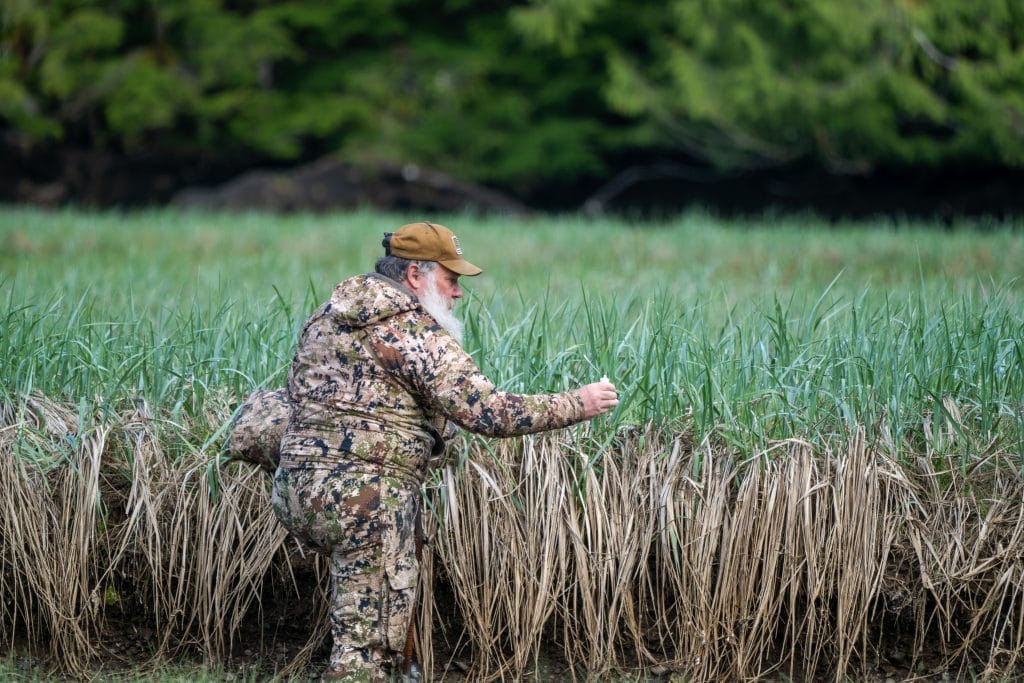
Protecting Your Gear and Keeping it BONE DRY
- Yeti Panga Dry Bags: These bags feature fully waterproof zippers and are perfect for protecting clothes, electronics, and other essentials from rain and water spray.
- Contractor-Grade Trash Bags: Heavy-duty trash bags are versatile and can protect everything from meat to cameras. They’re especially useful for keeping meat dry after processing.
- Tipi Tent and Stove: A lightweight tipi tent paired with a portable stove provides a warm, dry space to dry out damp gear, including clothing and camera equipment.
Firearm Protection
Caribou Gear Gun Shield: This lightweight cover protects your firearm from rain, salt spray, and the other harsh Alaskan elements while you’re hunting.
- Waterproof Gun Case: For transportation, use a durable plastic sleeve that creates an air pocket, ensuring your gun stays dry and even floats if dropped in water.
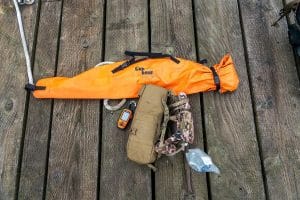
Water Filtration: Staying Hydrated Safely
Clean water is a must, and relying on a single filtration method is risky. Here’s what to bring:
- Pump Filtration System: A reliable pump filter is great for quickly purifying water.
- Gravity Filtration System: This is an excellent backup option for filtering larger quantities of water.
- Iodine Tablets: While not ideal for long-term use, iodine tablets can serve as an emergency backup.
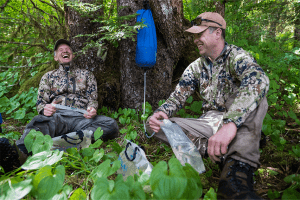
Additional Tips for a Successful Alaskan Spring Bear Hunt
- Layer Your Clothing: Alaska’s weather can change rapidly, so layering is key. Start with moisture-wicking base layers, add insulating mid-layers, and finish with your rain gear.
- Bring Extra Dry Bags: You can never have too many dry bags. Use them to organize gear and keep everything protected.
- Plan for Meat Care: Have a plan for processing and protecting your meat. Contractor-grade trash bags and a cool, dry place to store meat are essential.
Concluding Thoughts on a DIY Alaskan Spring Bear Hunt
A DIY Alaskan spring bear hunt is an adventure of a lifetime. I’ve been going to Alaska for decades and it never ceases to amaze me. BUT it requires careful planning and the right gear. From pack rafts and rain gear to dry bags and water filtration systems, being prepared for the elements is the key to success. Whether you’re navigating remote waterways, staying dry in the rain, or protecting your gear, having the right equipment will make your hunt safer and more enjoyable.
If you’re ready to take on the challenge, start gathering your gear and get ready for an unforgettable experience in the wilds of Southeast Alaska. But first, you’re going to need a tag! Watch this Alaskan application strategy video and set yourself up for success in this year’s draw.
Some of the links in this article are affiliate links. If you purchase through them, we may earn a commission at no extra cost to you.


